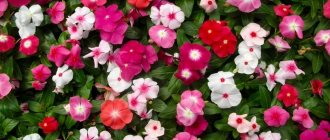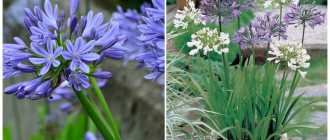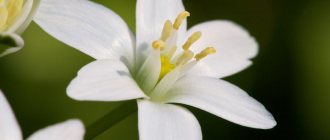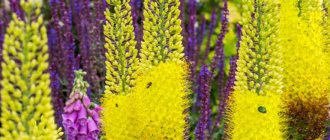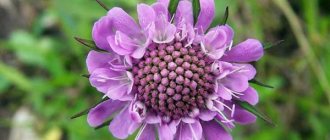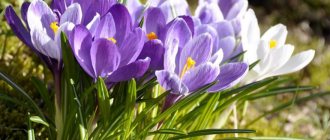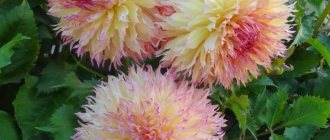The evergreen herbaceous perennial plant Dichondra is part of the Convolvulaceae family. Plants such as calistegia, morning glory and bindweed are considered related to dichondra. The name of this plant is derived from 2 Greek words translated as “two grains”, which is associated with the appearance of the dichondra fruits, which look like a two-chambered capsule.
This genus includes 10 species; under natural conditions they can be found in the humid regions of the subtropics and tropics of New Zealand, America, Australia and East Asia. Flower growers began cultivating this flower quite recently, but at the same time, designers have learned to make beautiful compositions with its help. That is why in 2004, at an exhibition held in Moscow, dichondra received a silver medal.
Brief description of cultivation
- Bloom . Dichondra is cultivated as an ornamental foliage plant.
- Landing . Seeds for seedlings are sown in January or February, and young plants are planted in open soil from the last days of May to the second half of June.
- Illumination . Grows well in sunny areas, in diffused light, in shady areas and in shade. Varieties with silver foliage are more light-loving.
- Soil . Loams with good drainage and a pH of 6.6–8.0 are ideal for growing crops.
- Watering . Moisten the soil moderately but systematically, and do this in the evening to avoid burns on the leaf blades.
- Air humidity . During the hot, dry period, it is recommended to moisten the foliage in the evening.
- Fertilizer . During the growing season, fertilizing is carried out once every 15 days; for this purpose, complex mineral fertilizer with a high content of potassium and nitrogen is used.
- Trimming and pinching . To make the plant more lush, at the stage of formation of the fourth pair of leaf blades, its stems are pinched. Also, regularly trim the stems every 7 days as they grow.
- Reproduction . By seeds, layering and cuttings.
- Pests . Whiteflies, flea beetles, nematodes and aphids.
- Diseases . It is highly resistant to diseases.
Application in landscape design
Dichondra Emerald Falls is an ampelous and ground cover plant. Most often it is grown in hanging pots. Decorate walls, balconies, arches, terraces, gazebos and other objects. If you plant the plant in open ground, it will spread beautifully along the ground, form a continuous carpet and become an excellent backdrop for bright flowers.
With its help you can shade the veranda, cover an alpine hill or flower bed with greenery. Combines with lobelia, petunia and other decorative specimens. Dichondra Emerald Falls is ideal for creating hedges or garden sculptures.
The plant is successfully used in landscape design when it is necessary to create the illusion of a babbling brook. Dichondra emerald waterfall looks attractive in shady gardens under trees where ordinary herbs cannot grow. In the shade, the leaves of the plant become larger. It can be sown in the patio, between the slabs of walkways.
The branches of the plant grow up to 2 m or more in length
Features of the ampelous dichondra
Dichondra is a creeping evergreen plant that forms a dense carpet on the surface of the earth. The plant's root system is superficial. The stems reach a height of no more than 15 centimeters, but their length varies from 100 to 150 centimeters. Branched creeping shoots are able to quickly take root thanks to the superficial roots that form in the internodes. Flowering is observed in May–August; during this period, flowers open on the plant that do not have high decorative value; they reach from 0.2 to 0.3 cm in diameter and are colored purple, pale green and light yellow. Pollination of flowers occurs thanks to small insects. The shoots are decorated with lush foliage, its shape is round (similar to a coin), and its diameter can reach 5–25 mm.
Ampelous dichondra is very popular among gardeners. In regions with mild and warm winters, it is cultivated as a perennial, and where it is very cold in winter, it is grown as an annual. In the warm season, indoor dichondra is taken out onto the terrace or balcony, and in the winter it is brought into the house.
Growing dichondra from seeds
Sowing
If dichondra is grown in the garden as an annual, then it can be propagated by seeds, cuttings (rooting is carried out in the summer) and layering. If your site does not yet have this plant, then for primary cultivation they use the generative (seed) method, and you can grow the flower through seedlings, or you can sow the seeds directly into open ground.
Sowing seeds for seedlings is carried out in the middle of the winter period, or more precisely, in January or February. Before sowing, the seed material is immersed overnight in water, to which a growth stimulating agent is first added. The container is filled with pre-disinfected peat soil substrate intended for growing seedlings, which is spilled with sodium humate. The seeds are buried in the soil mixture no more than 0.8 cm. It is recommended to sow the seeds in small pots, with 2 or 3 seeds placed in each of them. Cover the top of the container with glass (film), and do not forget to leave a small hole for ventilation. Crops are transferred to a warm (22 to 24 degrees) place with bright, diffused light.
Growing seedlings
If everything is done correctly, then the first seedlings may appear just 7 days after sowing. The emerging seedlings are characterized by extremely slow growth, so the shelter from the container is removed only after they have become stronger.
Do not forget to systematically water the young plants, and also carefully loosen the surface of the soil mixture. Remember that if the plants do not have enough light, then they can become very elongated. A small amount of a growth stimulating agent must be systematically added to the water intended for irrigation. Picking of seedlings is carried out during the development of 3 or 4 true leaf blades. If you are growing the plant as a hanging plant, then you need to transplant it immediately into a hanging basket or flowerpot. But if you need seedlings for planting in open ground, in this case the picking is carried out in larger pots. Before planting seedlings in the garden, they should be hardened off.
"Silver waterfall" in your garden. Dichondra - growing from seeds
Watering rooted dichondra
A common mistake is to water too little and too often. This causes shallow rooting, which weakens the plant and makes it more susceptible to weed invasion and disease.
Apply at least 2 cm of water during each individual watering (taking into account soil drainage issues). Also, do not allow the soil to dry out completely between waterings.
Planting dichondra in open ground
What time to plant
In regions with warm and mild climates, dichondra is used to create an alternative lawn. This is possible due to the fact that it is resistant to frost and also to trampling. The ampelous dichondra is transplanted into the garden only after 1.5–2 months have passed after the seedlings appear. In the northern regions, dichondra seedlings are planted around the first half of June, and in the southern regions - in May. This flower grows well in sunny areas and in shade. But it should be taken into account that the variety with silver foliage is more light-loving. Dichondra does not have any special requirements for soil composition, but it grows best in well-drained loamy soil with a pH of 6.6–8.0.
Landing rules
If you plan to grow dichondra as a ground cover plant, then you need to remember that it is characterized by extremely slow growth. That is why, when planting in the ground, a distance of 10 to 15 centimeters must be maintained between the bushes. The depth of the planting holes should be such that the root system of the plant, taken together with a lump of earth, can be placed in them. Carefully transfer the seedlings into the holes and fill them with soil, compact its surface and water generously.
Care and cultivation
The creeping tropical vine is luxurious, but it can also be very capricious. First of all, this concerns the cultivation of “Silver Falls”. Before planting, the hole must be thoroughly treated with pesticides, otherwise, after an adult plant has formed, it will be difficult to fight actively germinating weeds.
Any sunny or partial shade location on the site is suitable. The shadow is undesirable; the color of the leaves will become pale and inexpressive. The soil must be drained, and there are no strict requirements for the composition. A neutral acidity level, loamy soil is recommended. If the area is formed by fertile soil, an actively growing vine with large foliage will grow on it.
Planting the elegant dichondra in hanging pots or in an open area depends on the region in which it is grown. Residents of the southern regions can transfer it to the garden as early as mid-May, and residents of the northern regions - in the middle or end of June, depending on how the soil warms up. The day for planting should be sunny and warm, and frost should no longer affect the soil at night. Otherwise, the seedlings may not adapt and die.
If the plant was purchased in a store and kept in a pot, before moving it to your summer cottage, you need to inspect the foliage for pests. You can rinse with a warm shower and soapy water to prevent their formation on a vine that has not yet matured.
Planting by seeds
The purchased seed of the beautiful dichondra needs to be planted with the onset of spring, equipping a small home greenhouse. The seeds have a high germination rate; after 8-10 days several shoots will appear above the soil surface:
- in a damp and soft substrate, slightly deepen the seeds;
- cover the container with film and place it on a lighted windowsill in a warm room;
- regularly maintain the greenhouse effect by moistening the soil, but not forgetting to ventilate the mini-greenhouse once a day;
- After germination, reduce moisture.
As the seedlings grow, the greenhouse film can be removed from them, ensuring they are kept at a temperature of 23-25 degrees and regularly moistened.
Young plants will quickly reach 15-17 cm in height, and this is just the right moment to plant them in separate containers, pinching the tops. When the seedlings are well strengthened, 8-10 shoots are released, and the weather returns to normal, they can be transferred to open ground.
Watering and crown formation
The plant will not tolerate it if the soil dries out completely - the root system is sensitive and dies quickly. Therefore, regular watering is the key to proper cultivation of any variety of dichondra on the site. The application of fertilizers should also be combined with irrigation: these can be complex mineral compounds containing potassium and nitrogen. Feeding is stopped in mid-autumn and resumed in the spring.
To activate branching and the formation of a lush hanging crown, the plant must be pinched after 7-8 leaves have formed. As the shoots grow, they can be trimmed at your discretion to give the desired shape. You should handle the lawn vine very carefully, which needs to be trimmed periodically. The height of the remaining foliage should correspond to the operational and decorative requirements of the site.
Caring for dichondra in the garden
Watering
If dichondra is cared for correctly, then when grown in the garden it will retain its high decorative value for 5–7 years. Although this crop is drought-resistant, watering must be systematic. However, liquid should not be allowed to stagnate in the soil. To prevent burns from appearing on the surface of the leaf plates, it is recommended to water this flower in the evening. On hot days, try to moisturize the bushes in the evening, as dichondra reacts positively to this procedure.
Top dressing
In order for dichondra to be as effective as possible, throughout the growing season, systematically feed it once every 15 days. To do this, use a mineral complex fertilizer with a high content of nitrogen and potassium.
Trimming
When the eighth leaf plate of the bush has formed, it is recommended to pinch it. Then, as the shoots grow and branch, prune. As a rule, during the summer, on average, one haircut is performed every 15 days.
You need to pull out weeds carefully, because the root system of dichondra is superficial and located at a shallow depth, so it can be very easily injured.
How to grow dichondra
Landing conditions
Dichondra seeds need warm soil temperatures to germinate. It should be planted when the temperature is above 20 degrees.
Typically in most regions this is late spring or early summer. When soil temperatures are too cold, seed germination and lawn establishment are much slower and more maintenance is required.
Dichondra care at home
It is not difficult to grow dichondra at home, but you need to remember its characteristics. They care for it in almost the same way as for other ampelous decorative foliage plants, for example, creeping ficus, asparagus, zebra, chlorophytum, rooting ficus or saxifrage.
Illumination
The amount of light a plant needs depends on the color of its foliage, for example, varieties with silver leaves need a lot of light, and green-leaved varieties can grow in a sunny or shaded place, or even in the shade.
Temperature
Throughout the year, in the room where the flower is located, the temperature should be between 18 and 25 degrees. However, if in winter it is in a room that is not heated, make sure that it is not colder than 10 degrees, otherwise the dichondra may die. If the room is always hot, then this has an extremely negative effect on the growth and development of the bush.
Air humidity
This flower is able to grow normally at low air humidity. However, if you moisten it every day, the green mass will increase by up to 25 percent. If you spray dichondra regularly in the morning and evening, then the green mass will grow 2 times faster. If in winter the flower is warm (above 18 degrees), then special attention should be paid to moisturizing the foliage.
Watering
Water the flower abundantly, but make sure that there is no stagnation of liquid in the soil mixture. In this regard, it is necessary to make a good drainage layer at the bottom of the pot. In the event that you cannot water the flower for a long time, then it can survive for some time even if the earthen clod is completely dry. Once the bush is watered, it will recover very quickly.
Fertilizer
Dichondra should be fed once every 15 days from April to September. To do this, use fertilizer for decorative deciduous indoor plants, for example, Ideal. And in order to accelerate the growth of deciduous mass, the flower can still be fed with Agricola once every 7 days. During cool wintering there is no need to feed the plant.
Trimming
In order for the bush to be dense, it will require regular pruning and pinching. When preparing the dichondra for winter, it should be trimmed. To make it more luxuriant, systematically pinch the ends of the stems, and after they have become very elongated, they are cut off. In cultivation, shoots can reach a length of about 200 cm, and if the climate is warm, then up to 600 cm.
Landscape designers often use dichondra to create an imitation of a “running stream” in a garden plot; it looks very unusual and beautiful. After the falling shoots reach the soil surface, they quickly take root, and the hanging plant becomes a ground cover. Decide for yourself whether to shorten the stems regularly or whether they will grow freely, but if you do not pinch the ends of the shoots, then the bush will not be so lush and spectacular.
Appropriate place
This flower grows and develops well both at home and in open ground. The surface roots formed in the internodes of the shoots allow the vines to take root very quickly, due to which the bush forms a continuous carpet of silver or green color, which does not lose its color even in winter.
A flower grown as an hanging plant has shoots flowing down like a green or silver waterfall. A basket or flower pot with a flower can be hung both in the living room and on the veranda, loggia, terrace or balconies.
Diseases and pests
Dichondra is very resistant to all pests and diseases. The fact is that it is essentially a weed, and if you care for it properly, then there will be no problems with it. But nematodes, which are microscopic worms that develop in conditions of high humidity, can still harm the plant. Due to nematodes, the plant experiences mutations that cause its death. At the same time, nematodes can settle both on those dichondras that grow in open ground and on those grown indoors. It is very difficult to get rid of nematodes; therefore, it is recommended to destroy the infected bush, as well as the soil in which it grows.
Much less often, aphids, whiteflies or flea beetles settle on the plant. In order to get rid of these insects, acaricidal drugs are used; in addition, it is recommended to adhere to preventive measures:
- the surface of the soil around the bushes cannot be covered with mulch, and pull out weeds only with your hands;
- if the bushes have become a dense carpet, then it is necessary to reduce the frequency of watering;
- Make sure there is not too much nitrogen in the soil.
Wintering a flower and maintenance requirements
Emerald and green species do not tolerate low temperatures well, so for the winter it is better to cover mother cuttings or fully formed plants with film or transfer them to greenhouses or indoors.
For the southern regions, care for the flower at home, but when transferring the plant, it is recommended to cut off long and overgrown shoots, which can later be used to propagate the flower and form new plants.
Reproduction methods
How to grow dichondra from seeds is described in great detail above. This plant can also be propagated by rooted layering and cuttings. Vegetative propagation methods are easier and more effective than seed propagation. When the vines are pinched or trimmed, many stem apical segments remain that can be used as cuttings. They take root very quickly. In winter, it is recommended to grow rooted cuttings indoors, and with the onset of spring they are transplanted to a permanent place.
It is much easier to propagate dichondra by layering. The fact is that the stems, in contact with the surface of the earth, take root themselves. Separate the resulting cuttings when you need them and plant them in a new location.
I propagate Dichondra by layering
Wintering of perennial dichondra
In those regions where winters are warm and mild, perennial dichondra can overwinter in open ground. To do this, the bush is covered with a layer of soil, and the top is covered with a film, which is covered with fallen leaves. In regions with frosty winters, the bush is transferred to a greenhouse with subtropical and tropical crops; it can also be placed on a glazed balcony, enclosed veranda or loggia. Dichondra should be in a well-lit room, where the air temperature should be from 11 to 15 degrees. During this period, the flower is not fed, but watered rarely and with a small amount of water.
A plant grown in open ground must be dug up in the fall and, together with a lump of earth, transferred to the basement, where it will remain in suspended animation until spring. In early spring, cut off the stems with root shoots from the mother plant, while the remaining root system is transplanted into the garden.
Dichondra Silver Falls. Wintering
Diseases and pests
Dichondra has high immunity and rarely suffers from diseases and pests when grown. The main dangers for her are:
- aphid - an insect that appears in warm weather and settles on the leaves of the crop in large colonies;
When infested with aphids, the leaves of the plant acquire an unnatural shine and become deformed. - nematode - when grown outdoors, dichondra can suffer from soil worms that disrupt the plant’s nutritional processes;
When affected by a nematode, the Silver Falls dichondra is best destroyed - root rot - the disease develops due to excess moisture, the crop turns yellow and withers.
In case of root rot, you need to adjust the watering regime and provide the perennial with good drainage
In case of pest invasion, dichondra can be sprayed with insecticides and home remedies - soap solution, garlic infusion. At the first symptoms of diseases, treatments with copper preparations have a good effect.
Main types and varieties
In natural conditions, you can meet at least 10 species of dichondra. However, only one species is grown in culture - Dichondra repens, or Dichondra argentea, which is a herbaceous evergreen plant (a detailed description of the species is given above).
This species has a couple of varieties, namely, silver dichondra and green dichondra, which are very popular in culture:
Emerald Falls
The shoots are decorated with round green leaf plates. A bush growing in a sunny place has smaller foliage than a dichondra plant growing in a shaded area.
Description of Dichondra Emerald Falls
Dichondra hybrid Emerald Falls is a herbaceous plant whose climbing stems reach 1.5 m in length. The leaves on the vines are small, round in shape, slightly pubescent, and rich emerald green in color. They create a dense head of greenery in the places where they grow. Dichondra emerald waterfall flowers are very small and yellowish in color. Against the general background of the plant, they are hardly noticeable, since they barely reach 3 mm.
Using a plant you can imitate a waterfall


